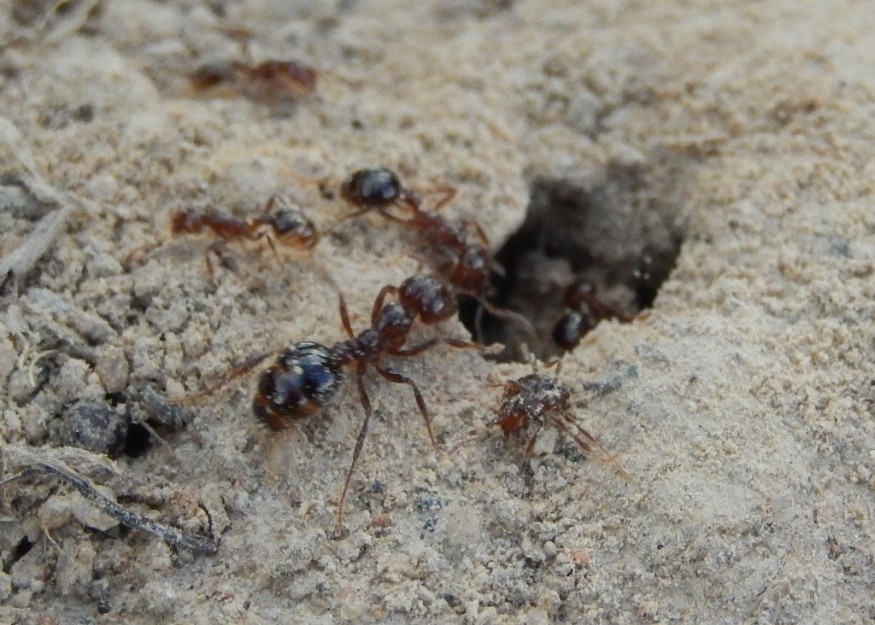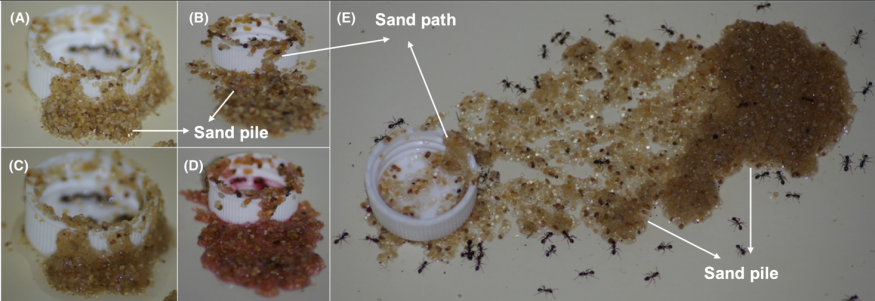Ants can use tools for foraging, behavior that was previously thought as unique to humans. New research from the U.S. Department of Agriculture - Agricultural Research Service (USDA-ARS) and Huazhong Agricultural University describes how black imported fire ants adjust their tool use strategy to forage liquid food.
The new study was recently published in the journal Functional Ecology. Although scientists have observed that ants use tools, this is the first study to observe their "flexibility in using a specific tool under environmental pressure," wrote the authors.
Invertebrates have received very little attention in their ability to use tools. It was only in the past few years that studies were conducted to reveal the few insects that use tools, have social learning behaviors, and have selective attention.
The authors wrote that liquid food, such as honeydew and nectar, are critical sources of carbohydrates needed for colony development of several ant species. However, the small size of ants would most likely lead to them drowning in the liquid food while foraging.

Black Imported Fire Ants Foraging Liquid Food
Black imported fire ants (Solenopsis richteri) were selected for the study to test if they had the ability to recognized the varying levels of drowning risks. The researchers filled containers with an inch of sugar water at varying surface tension and provided the ants with different sizes of sand grains.
Surface tension was adjusted using a non-toxic surfactant called TWEEN 80. The surfactant also enabled the researchers to observe if foraging would be affected by the odor of TWEEN 80.
When the sugar water was more viscous, the fire ants floated and fed on the surface. When the surface tension was reduced, the ants drowned without available tools. When grains of sand were provided, the black imported fire ants would gather grains on the inside of the container to leave and avoid drowning.
Dr. Aming Zhou from Huazhong Agricultural University said that the "ants used sand to build a structure that could effectively draw sugar water out of the container to then to be collected."

Cognitive Ability of Ants
The ants not only reduced the risk of drowning but simultaneously provided themselves a larger space to collect the liquid food. The sand structure allowed them to forage nearly half of the sugar water from the containers within five minutes.
The experiments proved not only the ability of black imported fire ants to use tools for foraging but their recognition of foraging risks. Entomologist Dr. Jian Chen from the USDA-ARS said that they've known that some ant species can use tools for foraging yet "were surprised by such remarkable tool use displayed" by the fire ants.
Their study suggests that social insects, including ants, have high cognitive abilities when it comes to foraging. Dr. Zhou said that they plan to conduct similar research on other ant species. "Overall, these results indicate that S. richteri may have the intriguing and novel adaptive capacity under ecological pressure," concluded the authors.
Read Also : [WATCH] Animal Instinct Reveals the Importance of Physical Distancing During a Viral Outbreak
Check out more news and information on Animal Behavior in Science Times.
© 2025 ScienceTimes.com All rights reserved. Do not reproduce without permission. The window to the world of Science Times.











